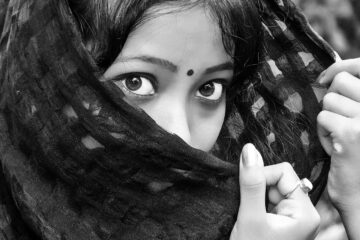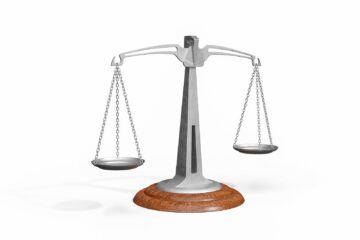![]()
Introduction
Women’s denial of entry in religious shrines has recently been on the news after the Supreme Court’s historic verdict allowing entry of Hindu Women of all ages to the Sabrimala Temple[1]. This discourse has raised a lot of women demanding the rights to worship and lead prayers in mosques[2]. A Muslim women’s organization called Nisa Progressive Muslim women’s Forum being one of them. This organization has done some amazingly remarkable work in the recent past. Basically to ensure the rights of women and to have all the laws that dominated women in the society. A few of them being the 2016 petition in the Supreme Court seeking sections of personal law dealing with Triple Talaq, polygamy, and Nikah Halal and inequality in intestate succession as unconstitutional[3].

In 2016, two- women from the Bhumata Ranragini Brigade went to the Shani Shingnapur Temple. It is to break the 400-year old tradition of the temple. It barr women from entering into its inner sanctum. While there has always been dissent against discrimination of women entering certain religious shrines. The two women faced resistance from the police authorities. They were stopped at the gate of the inner sanctum by the priest and higher authorities of the temple that is situated in Ahmednagar, Maharastra[4]. After this incident sparked in the media, there were a lot of PILs filed in the Bombay High Court which rescued and held that the state government is duty-bound to protect its citizen and also emphasized the fact that it is every women’s fundamental right to enter temples[5].
Even with all these judgments and changes, there are still people in this world saying things like,
“The entry of women into the famous Shingnapur shrine, which is devoted to Lord Shani, will drive more rapes.“[6]
Dwaraka-Sharda Peeth Shankaracharya Swaroopanand Saraswati
There are various religious matters in India with a clear demarcation for women alone. There is a lack of concrete jurisprudence regulating the relationship between religion and law. Religion is a very emotional and personal issue, the gap formed due to religion being an emotional and sensitive issue and the lack of concrete jurisprudence regulating the laws to tackle it has created an intractable lacuna in the social and legal ethos of India[7]. There was a wave-like never before of unpredictable behavior amidst people who. Whether knowingly or unknowingly are a part of many cultural and social groups. The Apex Court has in many cases control this wave of unpredictability. The doubt with regard to the amount the courts intervene in religious matters is not easy to avoid.
The Essential Religious Practices & Hinduism
The Essential Religious Practices (Hereinafter: ERP) test has been used to decide the absolute part of religion, leans towards melding attitude that the courts have implemented[8]. This test is basically for the judges to determine the aspects of religion. That are something one has to take into consideration. Basically when judges become prophets and determine what falls within religious practices and what does not. This is a test that the court takes into practice at its discretion which leads the tangent of the emotion of religion and seeks to rationalize it and purge it to superstitions[9]. Taking matters to court always makes the matter frivolous. Matters of religion, when put upon the eyes of the law, and with the motif of making it free of all kind of superstition end up depriving its people of the freedom of their freedom to observe their religious practices[10].
This essentially happens because the bench looks at the religion with the essence of law. This protects the rights of every citizen. Maybe an EPR for that denomination. One can also say that religious practices and superstitious beliefs. Keeping in mind that Hinduism in particular is often classified as a multicultural and diverse, and making EPR which is both uniform and acceptable, may not be a very practical approach[11]. ERPs are an unprecedented and unregulated approach to tackle a religion like Hinduism. It makes it a very slippery slope argument for EPR to intervene in the matters of religion.
Indian Young Lawyers Association vs The State of Kerala
A holy shrine of Lord Ayyappa situated at Sabarimala in Pathanamthitta District in the state of Kerela[12]. This temple restricted women of the menstruating age to enter. This practice was said to be a respectful gesture for the deity of the temple[13]. In 2006, six women who were the members of the Indian Younge Lawyers’ association file a petition. In the Supreme Court. It is to uplift the ban against women of the age ranging from; 10 years to 50 years from entering this holy shrine. The case was Indian Young Lawyers Association vs The State of Kerala, Writ Petition (Civil) No. 373 OF 2006 (Hereinafter, Sabarimala Judgment). The main argument of the petitioner was that this was a violation of their constitutional rights of equality. Also women’s right to practice their religion.
After some intense discussion in September 2018, the apex court held that women’s entry ban is constitutionally invalid. Such an exclusion of women is a clear discrimination base on gender. They pointed out that there is a clear violation of Article 21 and 15 of the Indian constitution. The verdict was pass with a majority of 4:1. Where CJI Misra, Justice Khanwilkar, Justice Nariman and Justice Chandrachud favore permitting women to practice their religion. And entering the temple. While the dissent was given by Justice Malhotra.
The dissenting judgment of Justice Malhotra state that every individual community has their faith and belief being practice for centuries now. Every individual should have the right to practice their religion in any way they like and the law interfering with them with logic and rationality is illogical. The court also held that women’s entry ban is a clear violation of Article 25(1) of the Indian Constitution.
Keeping Sabarimala judgment in the backdrop, we seek to suggest that, if we do not look at the domestic and international responsibilities of India to harmonize the rights of equality with the substances of faith, belief, social and cultural practices of a community with a clearly “identifiable set of beliefs, customs, and usages, and code of conduct which are being practiced since time immemorial, and are founded in a common faith”[14], which cannot be compromised or intervened with merely using a judicial lens and law-centric mindset. ERP being one the essence of Justice Malhotra’s dissent. There lays a clear distinction between ERPs of religion vis-à-vis, the EPRs of the different denominations of a polytheistic religion like Hinduism.
If we look at Hinduism with the lenses of various values, we can see that tradition of banning one gender, i.e. women, in this case, we see that these traditions are not under the ERP of the entire religion. It is only a practice of Sabarimala temple, as in this temple Lord Ayappa is in the form of Nashtik Brahmachari, who is a firm believer of the strictest form of celibacy, and has placed himself away from women[15].
Conclusion
The courts have interpreted under Article 14 and 15, that if any persons right to practice and profess the religion of their choice under Article 25(1), limits another person’s right to practice and profess the religion of their choice, then the first person’s right can be limited by the courts.
When a person’s rights have been challenged by the state, they can use the protection of Article 14, 15(1), 19, and 21. Further when such interference is by an ordinary person or a non-statutory body then the person can use the protection of Article 15(2) and 17. This distinction helps us understand the difference in these provisions of the fundamental rights and their ‘vertical and horizontal’ implications.
The Indian jurisprudence inequality has adopted the approach that a person’s right to freedom to practice and profess the religion of their choice does not override the right to equality of another person. This is because the right to equality is a primary fundamental right, we can see this as it is to even non-citizens.
In this paper we discussed all the ways one can battle and win the ban against women’s entry into religious shrines. We have many precedence like the Sabarimala judgment, the Haji Ali verdict, etc that has shown us that the court of law has also favored women’s entry and women’s equality to practice any religion. Just with court judgments, it does not solve the issue in its entirety. It is the religion that we are talking about. It is an emotional sentiment of people that we as academics have to be sensitive about. While some argue that a judgment by the judiciary and their ‘rational’ thinking cannot be upheld from the sentiments of people, such sentiments are imbibe into society. Effective social campaigning is the only way we can tackle such issues and remove them from the roots.
References:
[1] Indian Young Lawyers Association vs The State of Kerala, Writ Petition (Civil) No. 373 OF 2006
[2] The Scroll, Encouraged by Sabarimala ruling, Kerala Muslim women’s group will demand right to pray in mosques.
[3] The Times of India, Muslim women’s body moves SC against personal law, March 6, 2016.
[4] Live Mint, Shani Shingnapur entry row: Bombay HC asks Maharashtra to protect fundamental right of women,
[5] Smt.Vidya Bal & Anr. V. The State of Maharashtra,PUBLIC INTEREST LITIGATION NO.55 OF 2016
[6] The Hindu, Women’s right to pray in temples: who said what, April 13, 2016,.
[7] ibid.
[8] Aankhi Ghosh, Essential Religious Paradox? The Supreme Court’s interpretation of Article 25, November 1, 2017.
[9]See, ibid
[10] ibid.
[11] ibid
[12] Sabarimala. Information and Public Relations Department, Government of Kerala.
[13] “Ayyappan: Hindu deity“. Encyclopedia Britannica. Britannica. Retrieved 20 October 2018
[14] J Indu Malhotra, Sabarimala Judgement
[15] Sabarimala judgement



0 Comments